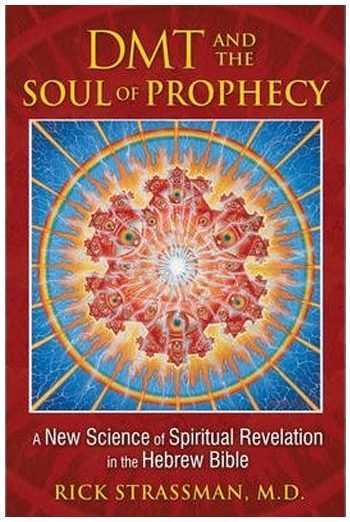DMT and the Soul of Prophecy – book review
First published in the Psypress Journal, March 2017
In DMT and the Soul of Prophecy (2016), Dr. Strassman returns to lab notes taken during thousands of DMT trips he facilitated while researching his first book, the groundbreaking eDMT: The Spirit Molecule.
This time, having left the Zen temple and returned to his Jewish roots, he makes a very good case that Old Testament (OT) accounts of interactions with spiritual entities are a better match for the phenomenology of the DMT experience than Buddhist descriptions of mystical union with something greater (pp. 22, 54). He also excludes Amazonian shamanism as a model for comparison, though here it is because of its “problematic” morals and culture, where “violent, often murderous, competition for power, prestige, money, and sex is commonplace” (p. 56-7). These are criticisms, however, that could equally be leveled at King Solomon himself or even Yahweh, save for the fact that He prefers milk and honey to money; and religions based on the Bible have not been entirely free of violence and power politics.
Regardless of the reason for his choice, having set his parameters Strassman makes a fascinating study at the juncture between OT theology and DMT psychopharmacology, detailing the physical, emotional and informational aspects of altered states as described and interpreted thousands of years ago in Jewish scripture and today in the lab.
The comparisons are compelling, with physical symptoms such as Daniel’s pounding heart, Jeremiah’s gastrointestinal crisis and Habakkuk’s trembling all echoed in the bodies of DMT subjects. DMT trips can occasion feelings of awe, reverence and reassurance similar to those described by the prophets (p. 131), and both subjects and prophets describe visions with the phenomenology of fire (p. 157, 167). On another plane entirely, Jacob wrestled with an entity who dislocated his leg, and one of Strassman’s subjects was pinned down and sodomized by crocodiles. Intelligent, sentient entities appear in both states, as chimeras or visions of hands, eyes and wings, unreal yet more real than real. Voices whisper words of inspiration, healing and guidance amidst glimpses of eternity, resurrection and the world to come (p. 193).
The similarities are many and the differences are revealing, including a certain gravity in the prophetic state, and moral and theological guidance that was rarely reported in his clinic.
Strassman’s ‘theoneurological’ model proposes that the prophetic and psychedelic states share features because the prophets were also under the influence of DMT, which was secreted naturally by their bodies as a result of fasts, meditations, certain postures and other devotional techniques (p. 260). Jacob had a special place he would visit that was conducive to the encounter, David advised contemplation and Moses sexual abstinence (p. 98 & 99), and many traditions today both psychedelic and otherwise make similar recommendations. For Daniel, three weeks of sadness provoked a vision (p. 98); elsewhere Strassman notes that levels of naturally occurring endogenous DMT and 5MEO-DMT in rats are increased by stress (p. 285).
DMT and the Soul of Prophesy is written with the clarity, organisation and intellectual rigor one would expect from a researcher of Strassman’s calibre, and his model is pioneering and extremely compelling. His assertion, however, that “there is little, if any, evidence in the text” that “Hebrew Bible personalities experienced prophecy by ingesting psychoactive plants or drugs” (p. 14) may throw out the baby with the bong-water. He does concede that the method of burning incense (i.e. in large quantities of finely ground resins in a small airtight chamber) “suggests an exogenous mind-altering agent” (p. 101), but he stops short of inquiring into the psychopharmacology of the ingredients listed in Exodus and the Talmud. As I explore in my book Neuro-Apocalypse, the most exalted plants in scripture are known to psychopharmacology as safe and pleasant psychoactives, and the Bible gives clear instructions on how to prepare and ingest them.
Myrrh and galbanum act at opioid receptors (like heroin). Frankincense, cinnamon and saffron contain GABA receptor agonists (like valium). The recipe for the holy massage oil blends together resins to form a complex synergetic mixture, containing eugenol (from which MDMA is manufactured), estragole (with its ‘electric LSD-like effects’), and various enzyme inhibitors to unlock the psychoactive potentials of other compounds present:
Then Samuel took the horn of oil, and anointed (massaged) him in the midst of his brethren: and the Spirit of YHWH came upon David from that day forward.
- 1 Samuel 16:13
Theoneurology, where “changes in brain function are the means by which God communicates with us”, challenges the assumptions of neurotheology, the popular materialistic model which assumes that “changes in brain function create the impression of such communication (p. 11)”. Strassman’s brilliant insight explains a great deal in terms of the phenomenology of extraordinary experience. It also brings fresh meaning into the scientific conversation on consciousness, where statistical significance has often been the only way to measure meaning.
His comment that “it is a top-down rather than a bottom-up model”, however, is problematic, because the prophets of Jewish scripture regularly challenge the voices and compulsions that drive them. Noah was condemned by the rabbis of the Holy Zohar for his failure in this respect, allowing the flood to happen without raising an objection. Moses, on the other hand, is praised as the greatest prophet of all, and he saved his tribe from annihilation by questioning Yahweh’s bloodlust; so “Yahweh repented of the evil which He thought to do unto His people” (Exodus 32:14). Invisible powers drive our meat-suits, and sometimes they have evil intentions; but something specifically human steers them, in the pages of scripture and the folds of the brain. Prophets rise up against divine power where necessary. Sometimes they approach the Godhead bottom up, from their own volition:
“And Enoch walked with Elohim: and he was not; for Elohim took him.”
- Genesis 5:24
Strassman’s neurobiology is innovative, but his theology is strictly orthodox. He engages the letters, the legends and the laws of the Bible as a whole, as it was when compiled into something like its modern form in the 6th century BCE and standardized in the 7th century CE; but the oldest verses date back to the tenth century BCE or before. Modern textual criticism approaches the Bible as a mixture of texts rather than a single work, and even the Vatican has conceded that multiple authors may have written it. Its most ancient layers can, as Strassman notes, inform our own encounters with the other; indeed, they might be read as an instruction manual for the human psyche. Interspersed among them, however, and sometimes clause by clause, are verses of law, priestcraft and genealogy penned many centuries later in response to a series of shifts in the dynamics of power.
While there would have been little political reason for scribes to doctor the accounts of entities and their physical and emotional correlates, it is clear that the message of Moses was altered repeatedly. Yahweh’s concerns shifted radically in half a millennium, from the Iron Age commonwealth of the Judean hills to a centralized theocracy that extracted taxes from a wide territory and paid tribute to the empires at its borders.
Taking orthodox Jewish thought into an unorthodox sphere, Strassman writes a compelling and eye-opening investigation. The Bible, however, is said to have 70 faces for each possible interpretation of a given verse, and perhaps a bottom-up rather than a top-down perspective makes more sense for the current political landscape. Strassman’s conclusion, describing the Bible’s continuing influence on a list of powerful institutions, sounds a little sinister in the 21st century:
The verbal teachings of the Hebrew Bible’s God and His angels gave birth to and continue to sustain Western law, theology, ethics and morality, psychology, natural and social science, history, finance, and government. In contrast, a uniquely psychedelic influence on these foundations of Western civilization as yet is nowhere near as visible.
But the aeon is young, as yet, and there is cause for hope, as those foundations may prove to be brittle when the weight of other worlds is brought to bear upon them. As well as challenging the ethics of the deities, OT prophets railed at their monarchs and bemoaned the materialistic concerns of their fellows. Many psychonauts feel the same, and struggle against the systems of oppression they live under – for one thing, about 20% of people become involved in activism after taking psychedelics.[1] The characters in our oldest stories strived with and against the angels and the Godnames, and we can learn more from their stories, and from their psychoactives, than obedience.
Notes:
[1] Luke, D., & Yanakieva, S. (2016, June). The transpersonal psychedelic experience and change in ecological attitude and behaviour. Paper presented at the International Conference on Psychedelics Research, Stichting Open, Amsterdam, 3rd-5th June.

